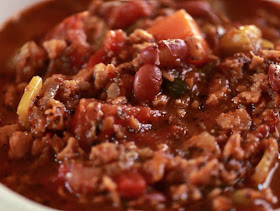Exceptional food that worth a special journey. And all other foods that can kill you.
Pages
▼
Friday
The Complete Electric Pressure Cooker Buying Guide: How to Choose the Right Pressure Cooker?
When buying an electric pressure cooker consider the following factors first:
1) What is the Optimum Size for Your Need? Though 6-quart cookers (Instant Pot 6-quart) are very popular on Amazon.com, it is highly recommended purchasing an 8-quart (Instant Pot 8-quart) because you can always make less food in a bigger pot, but not the other way around. Recipes that serve four is usually not a problem in either size cooker, but when you get to those recipes that involve larger yields, or you want to cook a pound of beans, the recipe simply won’t fit in a 6-quart.
2) Consider Breadth and Thickness of the Disk on the Pot’s Bottom. Based on experience, I found that stovetop or regular pressure-cooker pots with a thicker, wider disk retain heat better than those with thinner disks. They rapidly reached pressure and allowed for steady, hands-off cooking. Those with thinner, narrower bases can force you to adjust the heat up and down like a yo-yo to maintain pressure.
3) Is it Easy to Use Even for Your Grandmother? Different brands have different ease of use. Some lids lock automatically when the handles are lined up, while others require another step of sliding a switch to manually lock the pot. Some pressure indicators are deep in a hole, making you lean over the cooker to see them; others are confusing to interpret. The best models had pressure indicators that were brightly colored, prominently raised, and easy to read at a glance from several feet away.
4) What is the Maximum Temperature Reached? Temperature is directly correlated to pressure. High pressure is considered to be 15 psi, which is reached when water in the cooker is boiling at 250 degrees. Some cookers never achieved that temperature, and the food was not fully cooked.
5) Evaporation Loss is also Critical. As a pressure cooker heats up, valves in the lid generally release a small amount of steam until they come to pressure, at which point the pressure indicator rises and should cut off the release of steam.
Some of the electric pressure cookers I have experienced using at home and professionally at work, continued venting steam throughout cooking process, even if I made sure the pots were not over pressurized. Losing steam rapidly means you are losing some flavor. For recipes that need a lesser amount of liquid in relation to the cooking time, higher evaporation rates or rapid venting of steam can translate to drying and scorching. Most recipes call for sufficient quantities of liquid so this should not be a problem. However, if you have a cooker with a poor rating for evaporation loss, or if you own a pot that releases a fair amount of steam, this will greatly affect your cooking outcome.
Electric pressure cookers can also switch to the keep-warm mode when there is not enough liquid, a problem when cooking whole chicken. You might consider adding a little extra liquid to the pot every time.
6) What is the Height of Pot’s Sides and Size of Cooking Surface? A low and wide electric pressure cooker proved better since they provide a large cooking surface, making browning food (Maillard Reaction) efficiently and effectively before the lid is put on the pot. Wide inner pots also allow for browning meat in fewer batches (not crowded according to Julia Child), and this shape easier to see and reach into. Straight-sided pots were also easier to clean compared to others.
Now that you know how to choose the best electric pressure cooker, it is time to choose from the 10 most affordable and highly recommended electric pressure on sale. Get more information, please click here now, Affordable and Best Electric Pressure Cookers - Top 10 Brands in USA, UK, Canada, Australia, India and Amazon Reviews 2017- 2018.

No comments:
Post a Comment